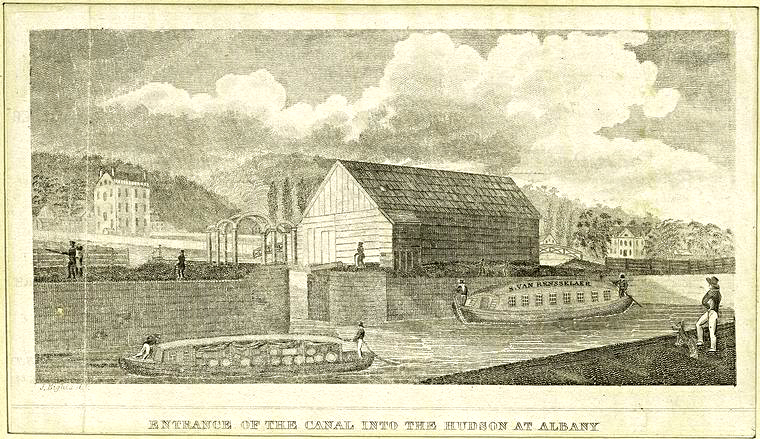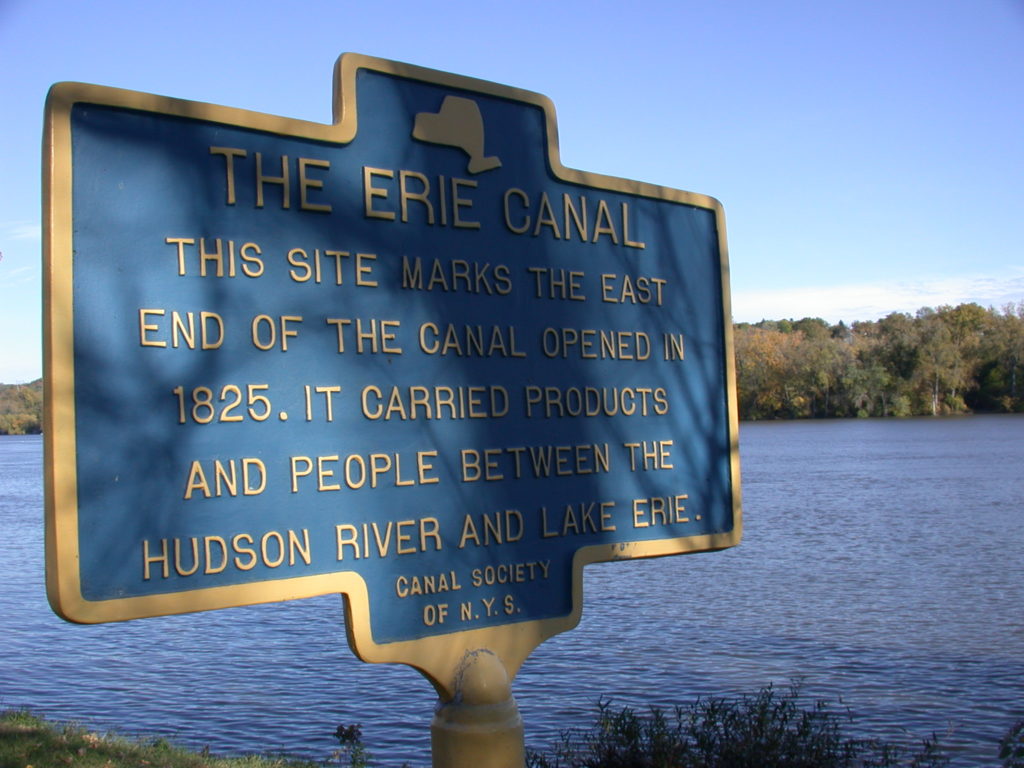
Once, it might have been the most important transportation intersection in the United States: the spot where the Erie Canal opened into the Hudson River. Here, barges carrying grain and hundreds of other products from the Great Lakes region had to be lifted from mule-drawn packet boats the plied the canal and moved onto sailing ships and steam vessels that would carry the goods down to New York harbor. And imported goods that had arrived in New York, or any of its many manufactures of the time, had to be manually loaded onto canal boats for their journey west. In the days before the railroads, and even for decades after rail reached over the Appalachians, the water level route was the commercial lifeblood of our nation.

And we still remember it today, with preserved pieces of the original canal scattered here and there throughout the Capital District, noted by the blue-and-yellow markers. But this particular spot, once the busiest harbor in the state outside of New York City, is now a riverside park with no hint of its industrial past. Now part of the Corning Preserve, the site has a bike path, a boat launch and lots of parking, but only a lonely historical marker gives any indication of its former importance. You have to follow the filled-in canal quite a way up the aptly named Erie Boulevard before you can find the first trace of old canal infrastructure, unmarked and forgotten, a little bit of lock wall right in front of the Huck Finn’s Warehouse.


Leave a Reply